 She makes sure a Pheasant time is had by all. 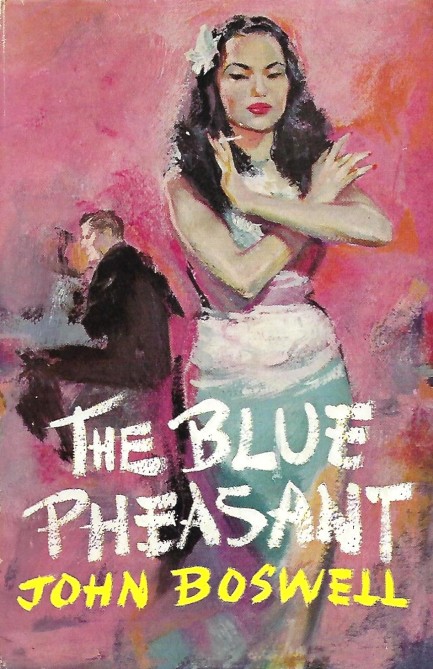
We were attracted to the 1958 John Boswell thriller The Blue Pheasant not only because of the lovely cover art, and the tale's setting in East Asia and New Zealand, but because the title suggests that a bar plays a central role. We always like that, whether in fiction or film. The teaser text confirms it. The title refers to a fictional bar in Hong Kong. Irresistible. The book stars professional photographer, amateur painter, and rolling stone Chris Kent, who's at desperate ends and takes a job to travel from Hong Kong to far away Auckland to recover two Chinese scrolls that are the keys to a vast inheritance. Needless to say, there are other interested—and ruthless—parties. In addition there are three femmes fatales: Sally Chan, the bar dancer who puts Kent onto the job; Sonya Sung, whose family are the rightful owners of the misplaced scrolls (or are they?); and Ann Compton, mystery woman who becomes Kent's reluctant partner.
We were amused by how easily Kent's head was turned by all three women. He's tough, but he's also an all-day sucker. In trying to sort out why women are so confounding to him, there are numerous moments of, “Well, what's a guy to do when women are ________” By the end, though, he starts to wonder if he's the problem. Spoiler alert: pretty much. The actual caper is well laid out, with a lot of sleuthing and surveillance, a few moments of swift action, a suspicious Kiwi cop, a love/hate dynamic between Kent and Compton, and precise local color in both Hong Kong and Auckland.
We consider The Blue Pheasant to have been a worthwhile purchase. That was actually almost a given, considering the low price for the book (Seven dollars? Sold!). But our point is that you never know what you'll get with a writer as obscure as Boswell. Well, now we do. And we have his sequel, 1959's Lost Girl. We'll get around to reading that later.
Turning back to the cover for a moment, the example at top is one we downloaded from an auction site because the William Collins Sons & Co. edition, which is a hardback with a dust jacket, shows the wonderful art painted by British talent John Rose to best advantage. The edition we actually bought is a paperback from Fontana Books, and our scans of that appear below. They're fine, but the cleaner Collins version is frameworthy. We have another Rose cover at this link, and we'll be getting back to him again shortly.
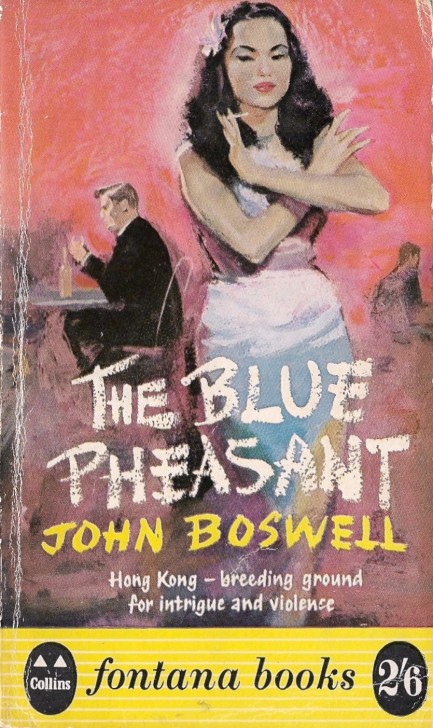 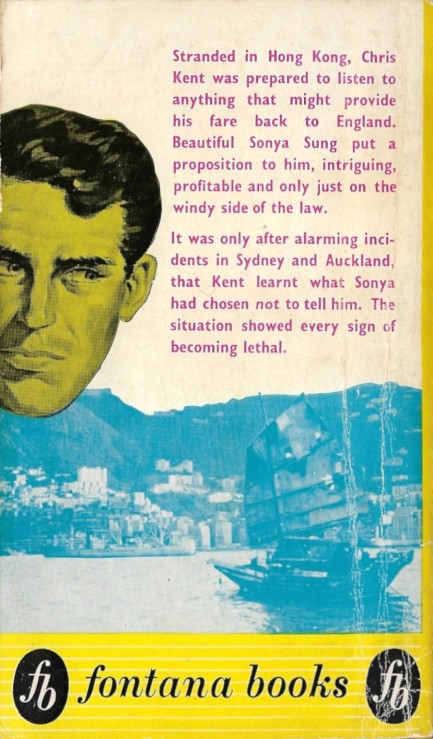
 Okay, Emanuelle nera, scene seventy, take two. And, guys? Dial it back a little—this is an r-rated movie. 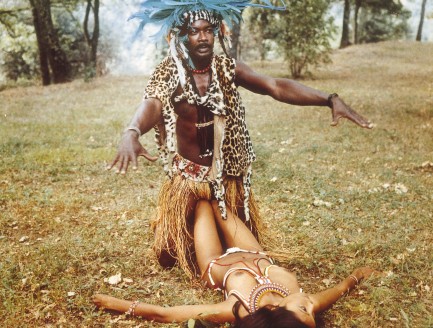
This fun production photo shows Javanese actress Laura Gemser and U.S. actor Don Powell in a grassy swatch somewhere in Kenya about to shoot a scene from their Italian made sexploitation epic Emanuelle nera, or Black Emanuelle, which premiered today in 1976. Feel free to read more about the movie here. Long story short, it's not good, but it's sure fun to watch. In the photo we love how Gemser has her knees fully in Powell's nuts. We imagine director Bitto Albertini: “Closer, Don. Get closer.” Powell: “This is as close as I can get without turning into a soprano.” Gemser: “I know the movie might automatically get an X from the ratings board if I open my legs, but Don and I have already rehearsed it that way a bunch, so why don't we try it?”
And now it's time for another real life Pulp Intl. story. Back when PSGP was working for Playboy he had a film producer friend in the softcore realm who needed extra crew one night for one of his productions. Such films often used porn actresses, and in this case there was a well known Russian performer who was booked to do a love scene. While in softcore films the actors often wore what were essentially tiny nylon hose over their units, and the actresses wore what were basically gigantic band-aids over their tender parts, it was always the performer's choice, and sometimes, for comfort reasons or whatever—with mutual consent—they didn't bother. This was obviously before the era of intimacy coordinators.
Anyway, came time to shoot a fake oral sex scene with the actress on her knees and the actor not wearing a stocking on his dick, and when the camera began rolling the Russian star began working her magic on the actor for real. He was surprised, clearly, but what could he say? He looked around confused, but made no noises about stopping the action. The director, who after about ten seconds realized what was happening, sort of shook his head and said, “Cut. Cut. Uh... [actress name] we won't be needing any of that today.” The entire set broke up in laughter. We're not suggesting anything like that happened between Gemser and Powell. It's just that the photo brought to mind that amusing story. We've got a million of 'em.
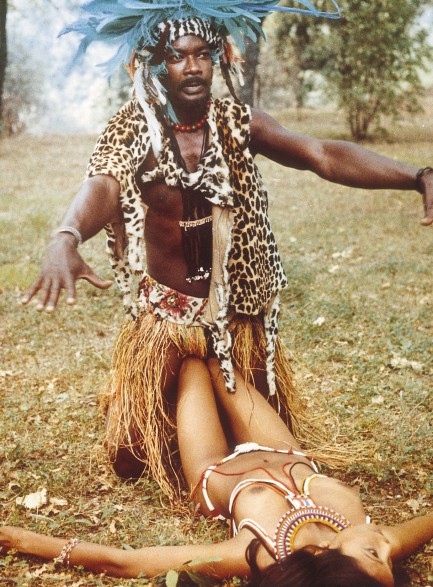
 Cushman's ideas about Indonesia make for an uneven mix. 
Above is a nice piece of George Ziel art we found on Flickr for Dan Cushman's The Half-Caste, a book we discussed not long ago. The character referred to by the title is a white woman with a Pacific Islander admixture that only a few can discern, but those who do discern it like the way it looks. Thus, even though The Half-Caste has a title that suggests a tale with sociological musings, it's nothing of the sort. It's an Indonesian island adventure of the usual type, and one that could be better. But Ziel's purple art is cool.
 Part of me really loves nature and solitude. But then part of me wants a frappuccino and a cheese danish. 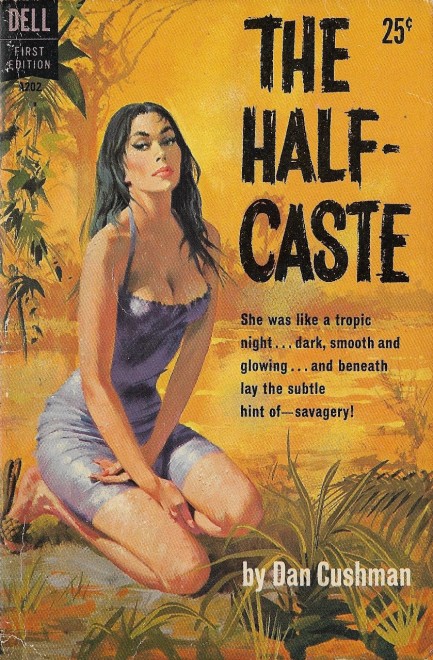
Frisco Dougherty is back, and as impressed with himself as ever, if we judge by how many times he refers to himself in the third person. Last seen in 1951's Jewel of the Java Sea, he's still knocking around Indonesia in 1960's The Half-Caste, eternally seeking the big score that will earn him enough money to escape the tropics for San Francisco. His newest chance comes in the form of a trio of Americans who have arrived in Java to repatriate the bones of an anthropologist who died in the jungle. Dougherty suspects the coffin they plan to recover contains not a body, but a treasure, and formulates a complicated plan to steal whatever is inside. He follows the group into deepest Borneo, funded by the Wuch'ang crime cartel, who he also plans to betray.
There are two main positives to The Half-Caste. First, the exotic setting mixed with deep background concerning the Dutch East Indies evolving into an indepedent Indonesia influenced by a rising China is interesting; and second, the contents of the coffin are a clever surprise. Overall, though, we considered the book an unworthy sequel to Jewel of the Java Sea. Dougherty always verged on caricature, but now he's fully up that river. While still calculating, bigoted, chauvinistic, and pervy, he's bereft of charm, which used to be his saving grace. We suspect Cushman wanted to show how the tropics had decayed Dougherty's psyche since the first book, but he comes across too unsympathetic. It feels as if Cushman returned to the character unwillingly.
As for the half-caste of the title—Annalee, aka Sangra Brueger—she's one of the trio of coffin seekers, but because Dougherty spends nearly the entire book tracking the group from afar, she's barely in the narrative physically until the last forty pages. Dell Publications used Annalee's meager presence, with an assist from Robert McGinnis cover art, to lure readers, but it's a slight misrepresentation. The book is basically all Dougherty, along with his two male partners. During the era of good girl art there were nearly always women on paperback covers, no matter how flimsy the rationale, so you have to expect this sort of thing. We can't really complain, because certainly, the art is brilliant. We're happy to have it.
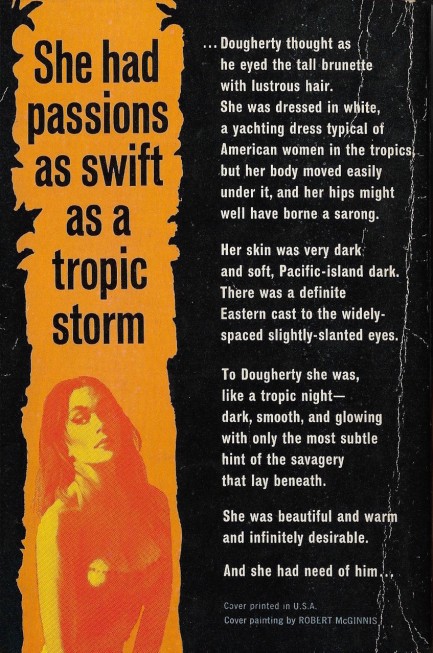
 Gemser always makes sure a fun time is had by all. 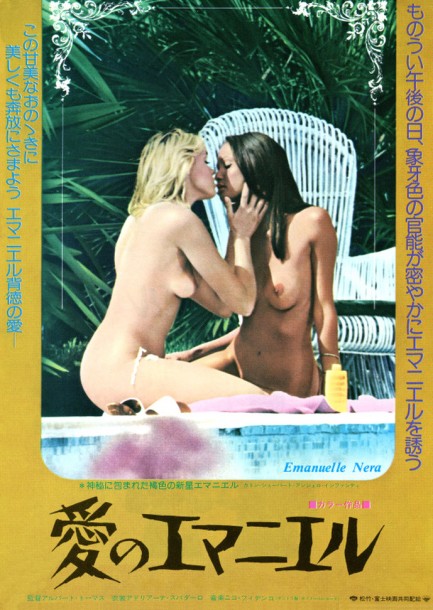
Above is another Japanese poster for Laura Gemser's Italian sexploitation flick Emanuelle nera, which premiered in 1975 and reached Japan today in 1976. The art shows Gemser getting frisky poolside with French actress Isabelle Marchall, who made numerous sexploitation and giallo movies. The title of this in Japanese means “love of Emanuelle,” and we echo that sentiment—which is to say, though Gemser's Emanuelle films are abysmally bad, we love them as products of an era of freewheeling, guilt-free erotic cinema. Watching the films on cable television during our youth, they somewhat affected our views on travel and sex, neither of which we had experienced yet. We explained this influence in our write-up on Mia Nygren's Emmanuelle IV way back. At their best, Gemser's Emanuelle movies (yes, it's spelled differently than Nygren's) were straightforward celebrations of sex, while at their worst they were influenced by horror and action movies, such as the one where she takes on cannibals, and the one where she smashes a ring of snuff filmmakers. Emanuelle nera has few pretensions—Gemser goes to Nairobi and gets laid. You can see everything else we have on the movie here, here, and here. Gemser will be back. Probably sooner than you think.

 Zumba, huh? Never heard of it. But anything that involves dancing around in this heat I'll take a pass on. 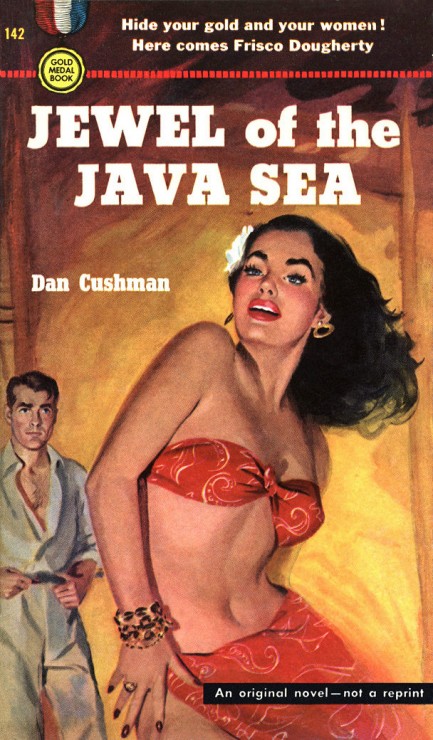
A glance at this Barye Phillips cover for Dan Cushman's 1951 novel Jewel of the Java Sea and you immediately expect it to be filled with lyrical old place names, with their romantic connotations for Westerners of a certain age—Siam, Burma, Celebes, Dutch East Indies, and broadly “the Orient,” names that have dissipated into history, though colonial memory continues to associate them with riches, adventure, and freedom. The name Java is still in use, and that's where Frisco Dougherty, a musician by training, but a fortune hunter and brawler in practice, has been knocking around for fifteen years attempting to make his fortune.
Dougherty has had little luck at this, which is why when he comes into possession of a yellow diamond said to be part of a priceless larger set, he goes into treasure hunter mode with sharp tongue, clenched fists, and hot lead. This jewel he's stumbled upon is supposedly one of five known collectively as the Taj Nipa, with those in turn married to a larger diamond called the Taj-i-nur. The whole kit and caboodle is presumed to reside in the vault of the Maharajah Sir Jagadipendra Bahadur, G.S., C.I., C.C.E.I., LMNOP. But that presumption could be wrong. Maybe the stones were liberated from their vault, though nobody has reported a theft.
Such capers are the core of these types of books, but there are also women. Anna, a Dutchwoman cast adrift in the islands, tells Dougherty she's searching for her missing father, an army major. She's important, but Dougherty is particularly intrigued by Locheng, an exotic dancer in the town of Pontianak, Borneo, and to his eye, a mix of all things good about Asia. He tells the reader she's, “Indo-Chinese, Malay, child of the melting pot, and [with] white blood, enough white blood make her vivid, give her fire.” Uh huh, Frisco loves him some Locheng, though he has a mighty brusque way of showing it:
He decided not to knock. He swung the door open. She sprang up to face him. She was naked. He took a deep breath and looked at her. She seized her sarong and swung it around her hips, tucked it tightly around her waist. Her breasts remained bare, after the fashion of native women.
“Why did you do that?” he asked. “Is it the Western influence that makes you think a body should be hidden? Let me see you as you were. You are so beautiful.”
The Western influence. We didn't notice him wandering around naked to demonstrate his liberation. But maybe that's his point—he's too corrupted to be free, but luckily—his luck, not hers—she isn't. At this point he's met Locheng exactly once before, and she called him a hodah orang—ugly man, according to the book, though not according to Google translate—and showed him the door. But he clearly thinks being cursed out was just a flirtatious prelude to his inevitable conquest of Locheng, and indeed, as these South Seas novels are usually male literary fantasies, that conquest will come soon enough.
Dougherty is interesting. He's impulsive and self-entitled; bigoted, though this appears to be more class than skin based; and sexist, to which we add no qualifiers considering he always wants women to parade around naked. But he's also sentimental and defends the underdog. We think he's an accurate depiction of a certain type of wayfaring American male endemic to the wilder reaches of the world. As former inhabitants of a couple of those reaches ourselves, we've met the type. Cue the Pulp Intl. girlfriends: “Met? You are the type.” Well, not really, though. We've always sought adventures, but our resemblance to Dougherty stops where he demands unearned respect, crosses lines of consent, and calls grown men, “boy.”
In the end, Jewel of the Java Sea is a South Asian thriller that sits neither at the top nor bottom of the genre. Frisco Dougherty might be worth having a beer with, but only until he says something offensive and refuses to apologize. What we'd prefer to hear from him are reflections about something other than how Western influence has ruined his chances to enjoy boobs al fresco. That may yet happen. Reading the book, we got the feeling he was supposed to become a franchise. A series never took root, but he did pop up in one sequel, 1960's The Half-Caste, also set in Asia. We already purchased it a little earlier today, because Cushman can write. What will be interesting is to see if Dougherty can grow.
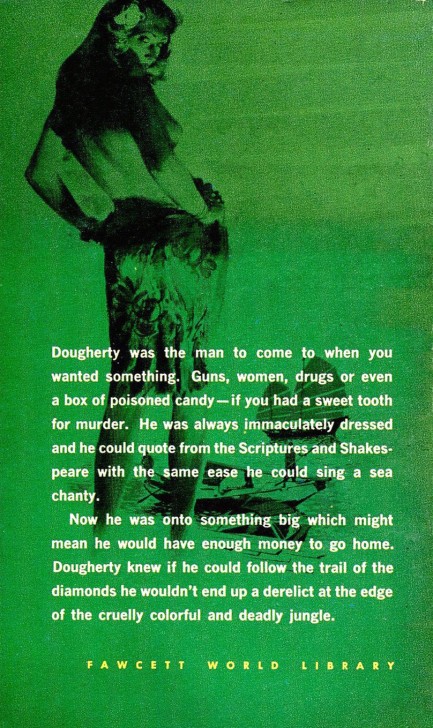
 It isn't somewhere you want to spend a lot of time. 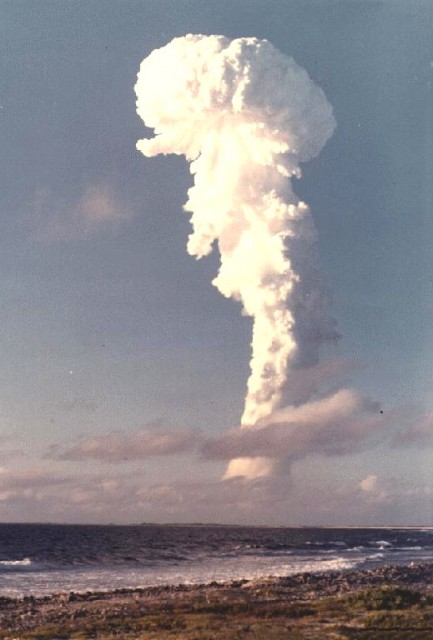
This photo shows a mushroom cloud in the process of rising to a height of 52,000 feet after a 100 kiloton yield nuclear bomb was dropped from a B-52 bomber near Christmas Island, a coral atoll south of Java, Indonesia, and now part of the Republic of Kiribati. The bomb was set off by the U.S. as part of Operation Dominic today in 1962. As we've mentioned before, the western powers are in the midst of another nuclear arms race, a fact that seems to get lost in a swirl of far less important news. Since mid-century crime fiction and films often touch upon the original nuclear arms race and its enveloping Cold War, we occasionally take a moment to look at these tests, and to remind people that nuclear weapons are pointless and stupid. Have a good day.
 We're both starving, and frankly, the way he's behaved he's given us absolutely no reason not to eat him. 
During the mid-century period, high quality cover art was seen as the key to paperback sales, thus many types of books received makeovers. Aussie novelist Ronald McKie's The Survivors is an example. You'd assume it was fiction but it's actually the true story of the Battle of Sunda Strait, which occurred in Indonesia between the islands of Java and Sumatra during World War II and pitted two Aussie cruisers against a major Japanese naval force. During a battle in which the outgunned Aussie ships fared better than could have been reasonably expected, both were sunk. In the aftermath a group of stranded men battled innumerable hazards in an attempt to survive. The book sprang from the handwritten account of an Aussie sailor who spent four years in a Japanese POW camp. He was a friend of McKie's, and when the author read the dairy pages he immediately decided to write a full accounting of the battle. As far as we know nobody ate anyone, but raft rides get pretty rough. The Survivors came out in hardback in 1953, with this Popular Library paperback appearing in 1954.
 Gemser makes a movie out of spare parts. 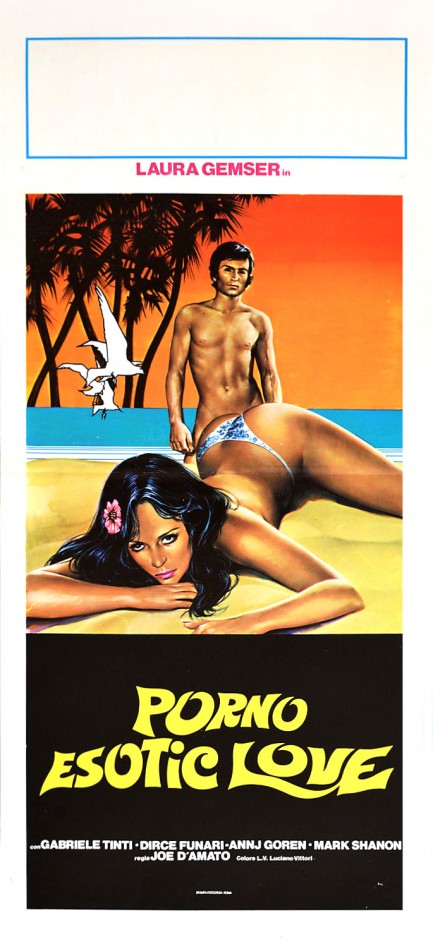
In Porno Esotic Love Indonesian sexploitation superstar Laura Gemser finds herself in another exotic locale—this time Hong Kong—where she engages in another series of softcore romps with hirsute westerners. She made something like twenty-six movies along these lines, which is why the makers of this one couldn't resist taking shortcuts. They cobbled together a good chunk of the footage from Gemser's previous outings and shoehorned them into a new narrative about a woman seeking revenge for the heroin overdose of her sister. The cynical usage of previously shot footage makes this one of director Joe D'Amato's worst efforts, but also one of his most profitable, we suspect. We can't possibly recommend the movie, but in order to compensate for the aching sense of loss you probably feel, there's a promo shot of Gemser below kicking back on a large rock, or perhaps the world's smallest deserted island, depending on how you want to look at it. Porno Esotic Love premiered in Italy today in 1980. 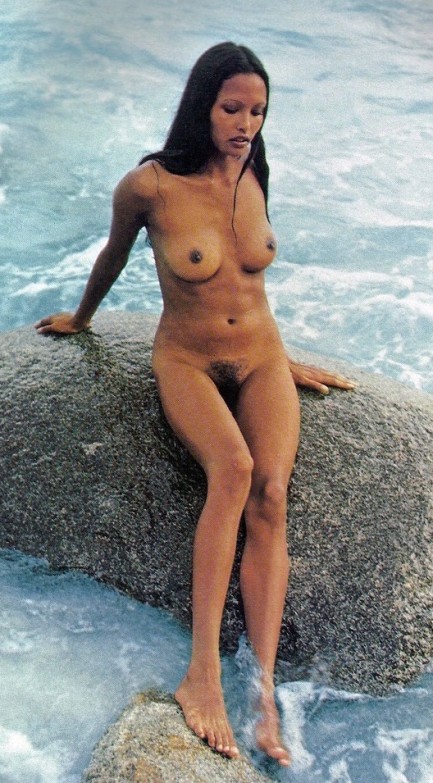
 Once you go Black Emanuelle you never go back. 
Javanese beauty Laura Gemser isn't black in the ethnic sense, but you know that going into Black Emanuelle, first of the Italian-made sexploitation series that borrowed the French Emmanuelle concept and took it to places its originators could never have imagined. Gemser could actually be half black or mostly black, going by skin tone alone, but in a way her being South Asian in real life becomes the whole point, as it makes all her love scenes titillatingly interracial, whether she's getting it on with Africans or white foreigners. This is the tamest of the series—before poor Emanuelle was beset by voodoo priests, cannibals, and worse.
In addition to the honeyed Gemser in the starring role you get a scoop of vanilla Schubert on top—German actress Karin Schubert. We aren’t going to bother to tell you about the plot of this one—it follows the form of other movies about westerners who get freaky in the African bush and eventually leave with profound insights and fond memories (cue shot of dreamy eyed actress gazing out airplane window as dark, mysterious Africa recedes below). In addition to the Japanese poster above we were able to locate quite a few promo images, including two of Gemser and Schubert doing field tests of Newton’s laws of physical motion. See below. Black Emanuelle opened in Japan today in 1976. 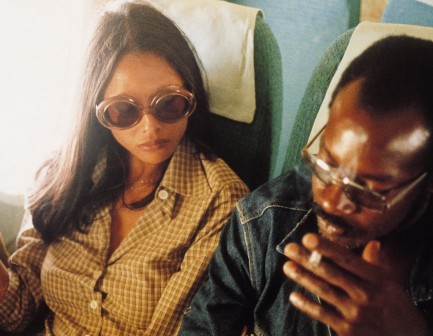 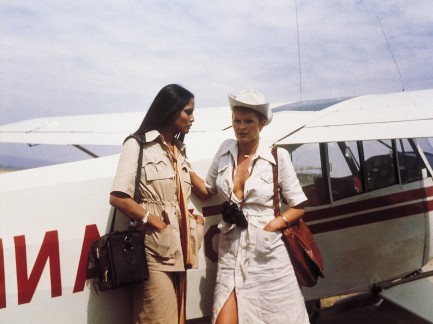 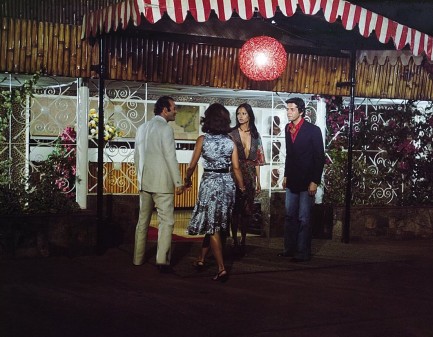   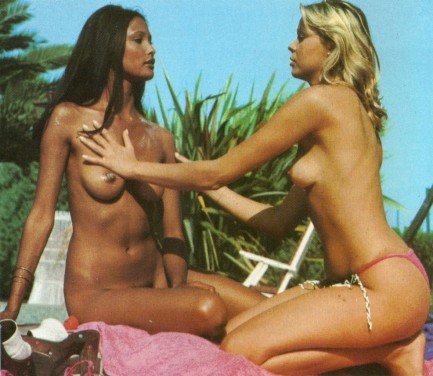     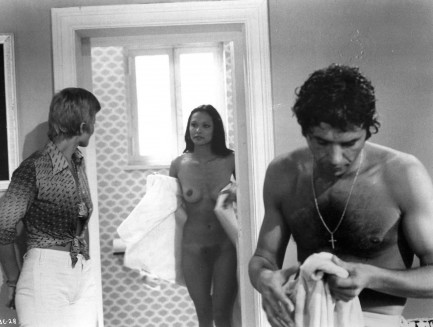 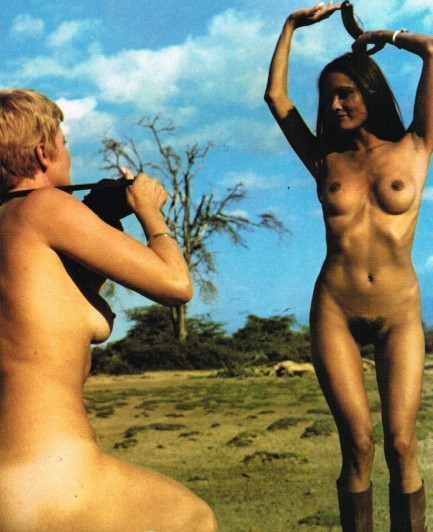 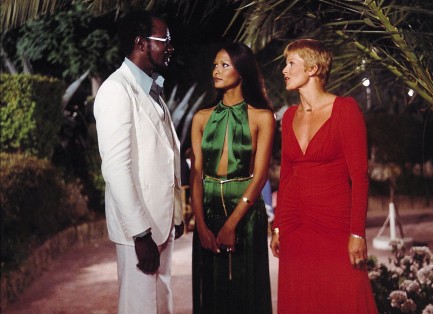 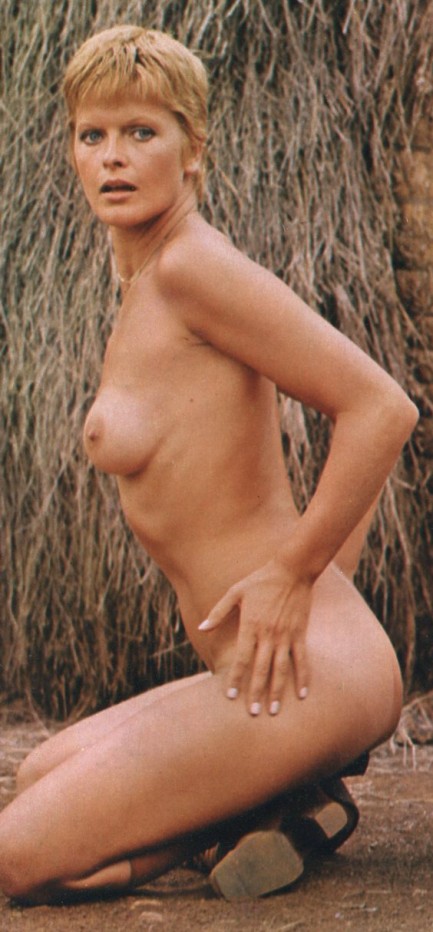  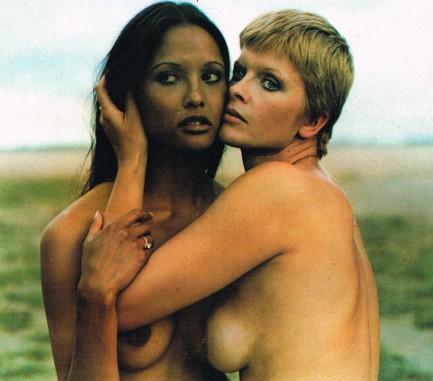 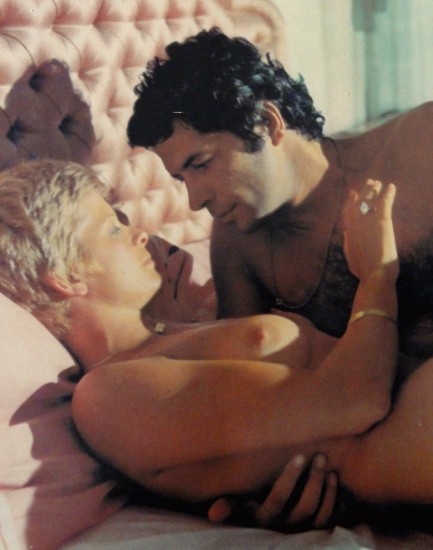 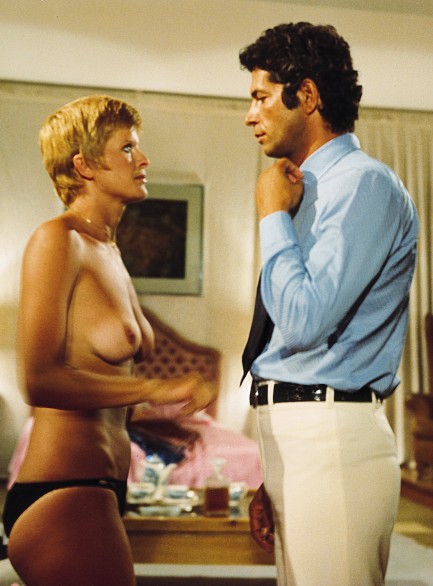 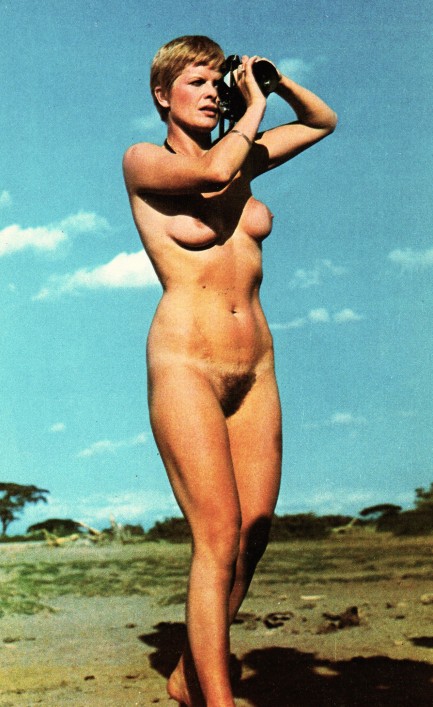 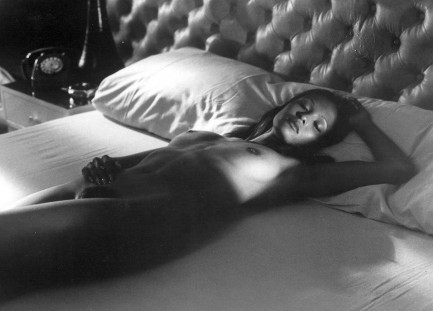 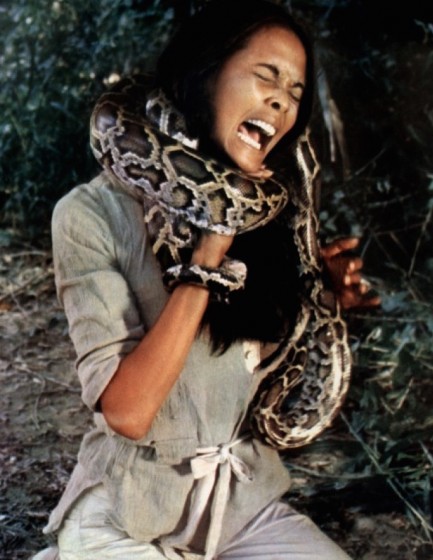 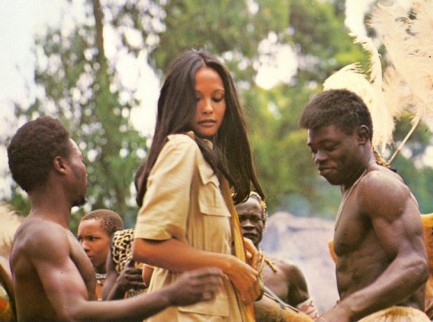 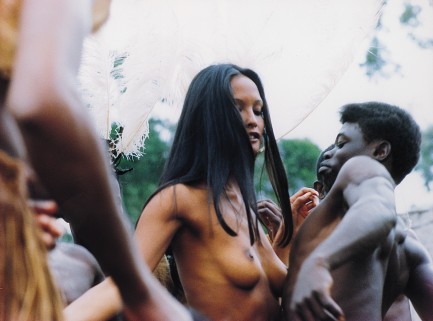  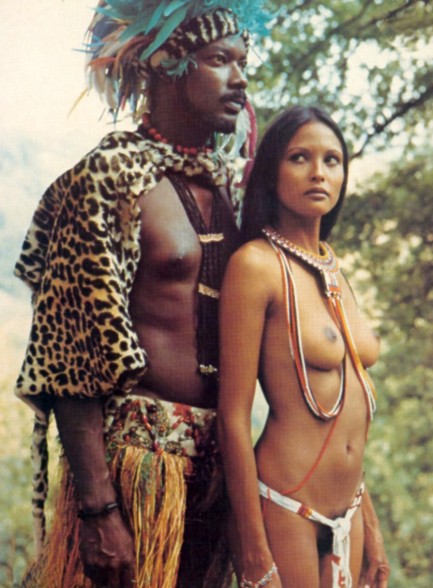  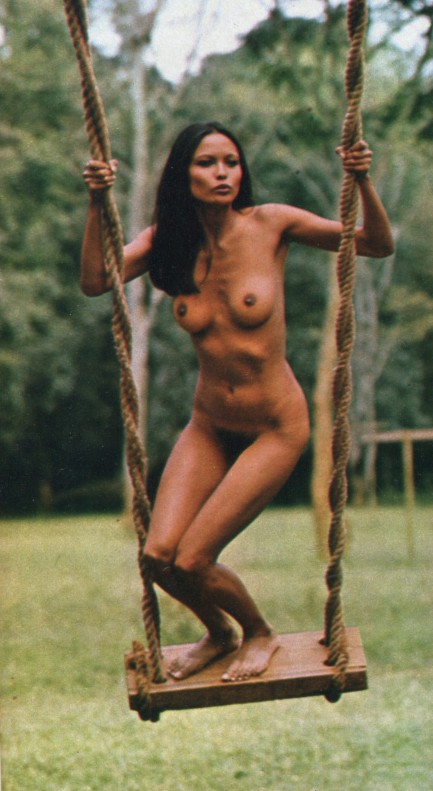

|
 |

The headlines that mattered yesteryear.
1945—Churchill Given the Sack
In spite of admiring Winston Churchill as a great wartime leader, Britons elect
Clement Attlee the nation's new prime minister in a sweeping victory for the Labour Party over the Conservatives. 1952—Evita Peron Dies
Eva Duarte de Peron, aka Evita, wife of the president of the Argentine Republic, dies from cancer at age 33. Evita had brought the working classes into a position of political power never witnessed before, but was hated by the nation's powerful military class. She is lain to rest in Milan, Italy in a secret grave under a nun's name, but is eventually returned to Argentina for reburial beside her husband in 1974. 1943—Mussolini Calls It Quits
Italian dictator Benito Mussolini steps down as head of the armed forces and the government. It soon becomes clear that Il Duce did not relinquish power voluntarily, but was forced to resign after former Fascist colleagues turned against him. He is later installed by Germany as leader of the Italian Social Republic in the north of the country, but is killed by partisans in 1945. 1915—Ship Capsizes on Lake Michigan
During an outing arranged by Western Electric Co. for its employees and their families, the passenger ship Eastland capsizes in Lake Michigan due to unequal weight distribution. 844 people die, including all the members of 22 different families. 1980—Peter Sellers Dies
British movie star Peter Sellers, whose roles in Dr. Strangelove, Being There and the Pink Panther films established him as the greatest comedic actor of his generation, dies of a heart attack at age fifty-four.
|

|
|

It's easy. We have an uploader that makes it a snap. Use it to submit your art, text, header, and subhead. Your post can be funny, serious, or anything in between, as long as it's vintage pulp. You'll get a byline and experience the fleeting pride of free authorship. We'll edit your post for typos, but the rest is up to you. Click here to give us your best shot.

|
|



























































































































